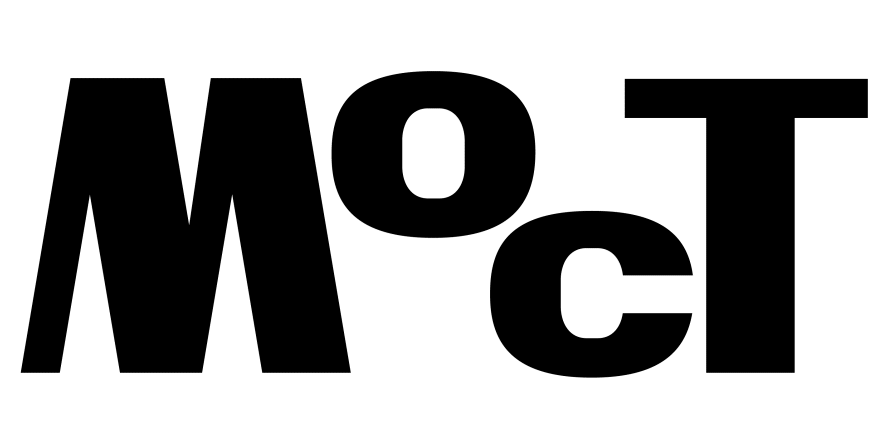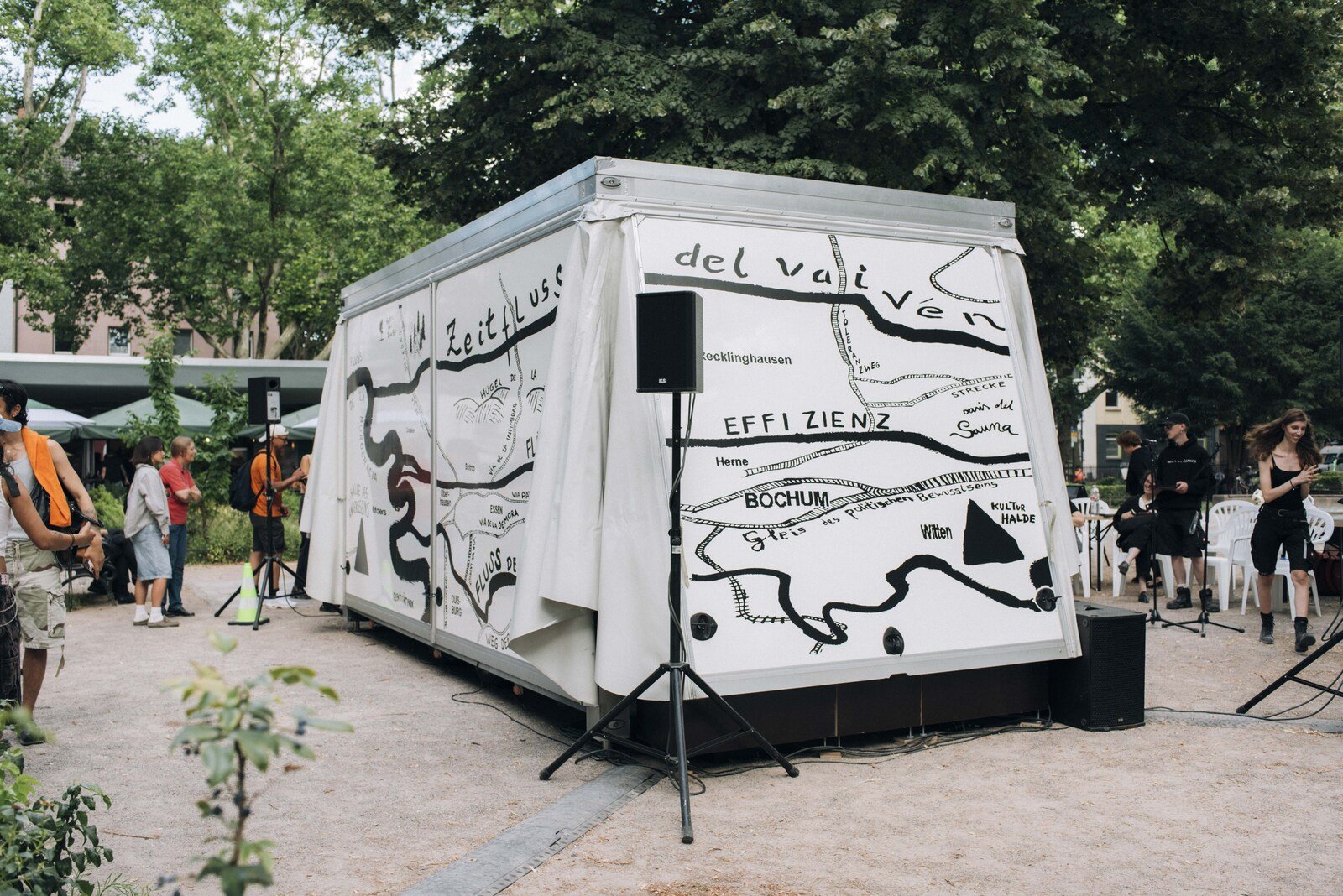Maja Ćirić in conversation with Britta Peters
An in-depth conversation with Britta Peters about her acclaimed curatorial work as the Artistic Director of Urbane Künste Ruhr, situated between her role in Skulptur Projekte Münster 2017 and her initial involvement in bringing Manifesta to the Ruhr Area. The interview took place on Friday, July 4th, 2025 in Dortmund, Germany.
Maja Ćirić: In the three-day gathering where we are meeting – one stop along the Grand Snail Tour (2024–2027) – the programme takes place in a public park in a central area of Dortmund, a city renowned for a significant percentage of immigrant populations. Seeing you – the artistic director of Urbane Künste Ruhr – immersed in a setting far from the white cube, surrounded by a very diverse crowd: what’s your perspective on public art?
Britta Peters: I’ve never worked in a museum in the conventional sense. My practice has always focused on art in public space, because that’s the part of the art world most embedded in society and in political realities. Art shouldn’t be based on distinctions or hierarchies. It’s always about producing and sharing ideas, fears, visions, knowledge, or comments, by making things public, and in this sense, about inclusion. It’s about understanding as much as possible from different ways of life.
MĆ: How does that translate into your daily practice?
BP: I try to develop projects that operate across multiple levels – both conceptually and socially. This approach includes a visual or sensory entry point – something that might catch someone’s attention with no prior context. But then it opens up into a more complex situation. I’m not just interested in “participation” for its own sake – it’s more layered than that. But in public space, you do need a level of accessibility, something to which a wide spectrum of people can connect, initially at least.
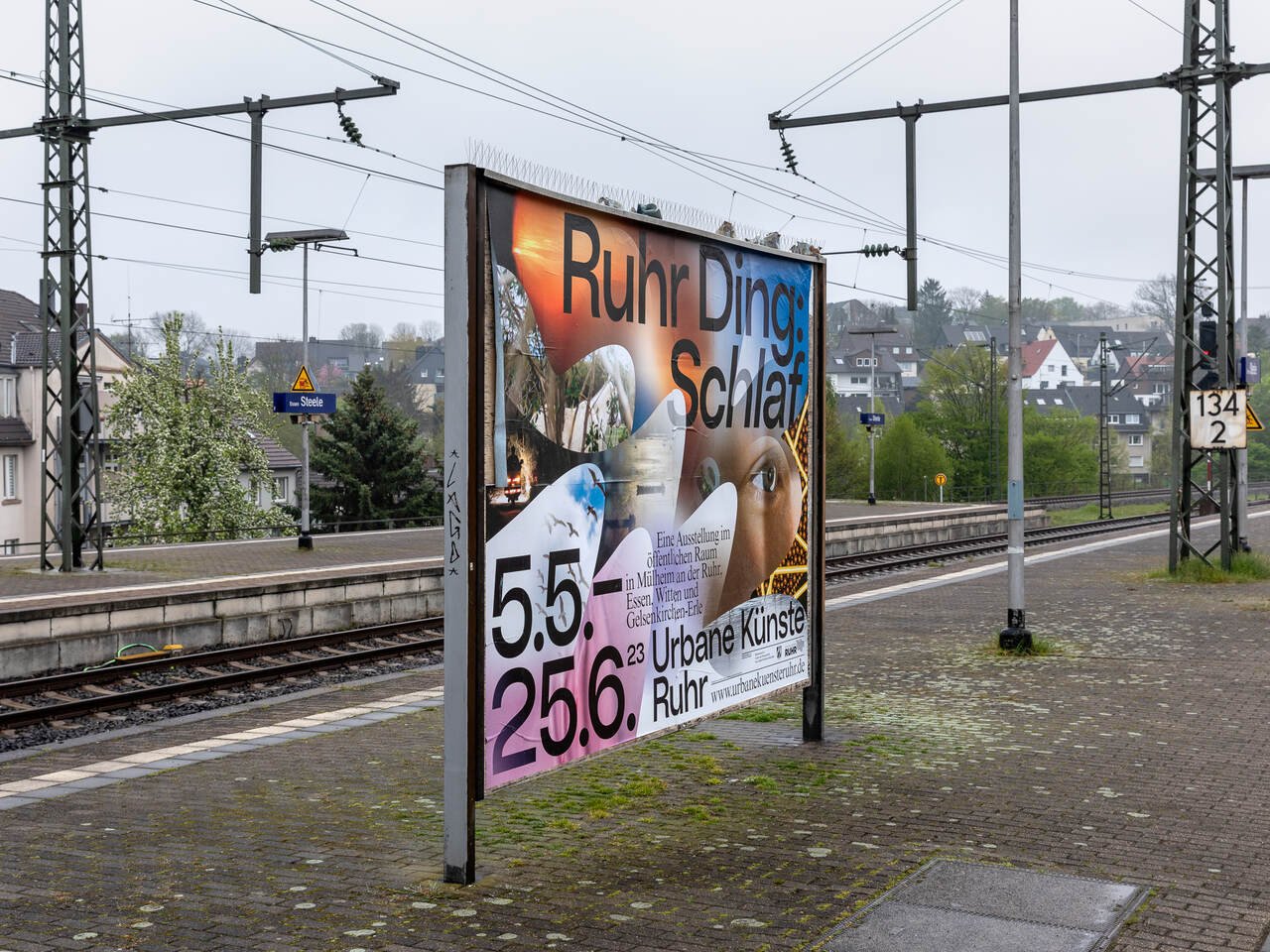
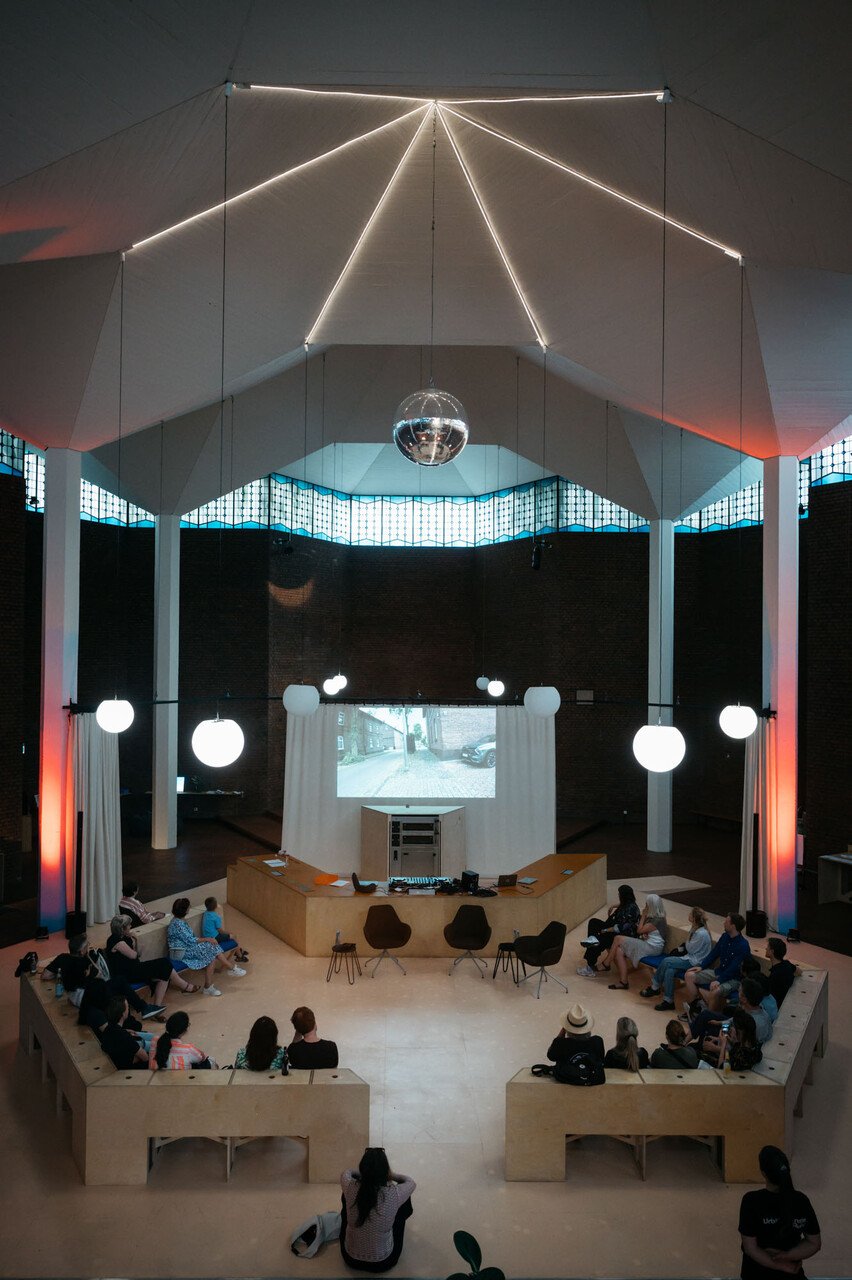
MĆ: When we talk about activating or reactivating public space, Claire Bishop’s Artificial Hells: Participatory Art and the Politics of Spectatorship often gets mentioned, an overview of socially engaged participatory art, known in the US as “social practice.” Bishop follows the trajectory of twentieth-century art and critically examines key moments in the development of a participatory aesthetic. How do you engage with the challenge of power structures in public space?
BP: That’s a central question in my work. I’ve worked on many different kinds of projects – some permanent, some temporary – across multiple cities. For example, at Urbane Künste Ruhr, we did the permanent sculpture path Emscherkunstweg and the Ruhr Ding Trilogy, which you also visited. Twenty projects across four cities, installed simultaneously for two months. I also developed a long-term collaboration with an artist from Serbia, Irena Haiduk, and now we are one year into a very challenging, long-term format till October 2027, the Grand Snail Tour.
In each of these formats, the question of participation, or co-production, or how to connect with the audience is answered differently – it’s never one-size-fits-all. Each project is a new experiment in balancing power relations. Within these projects, we experimented with diverse modes of working together. With the permanent artworks, for instance, we invested heavily in mediation – guided tours, performances, educational formats – to activate the works and turn them into spaces for dialogue. With temporary installations it’s a different rhythm, but the goal remains: creating moments where hegemonic structures can be questioned, or even momentarily suspended.
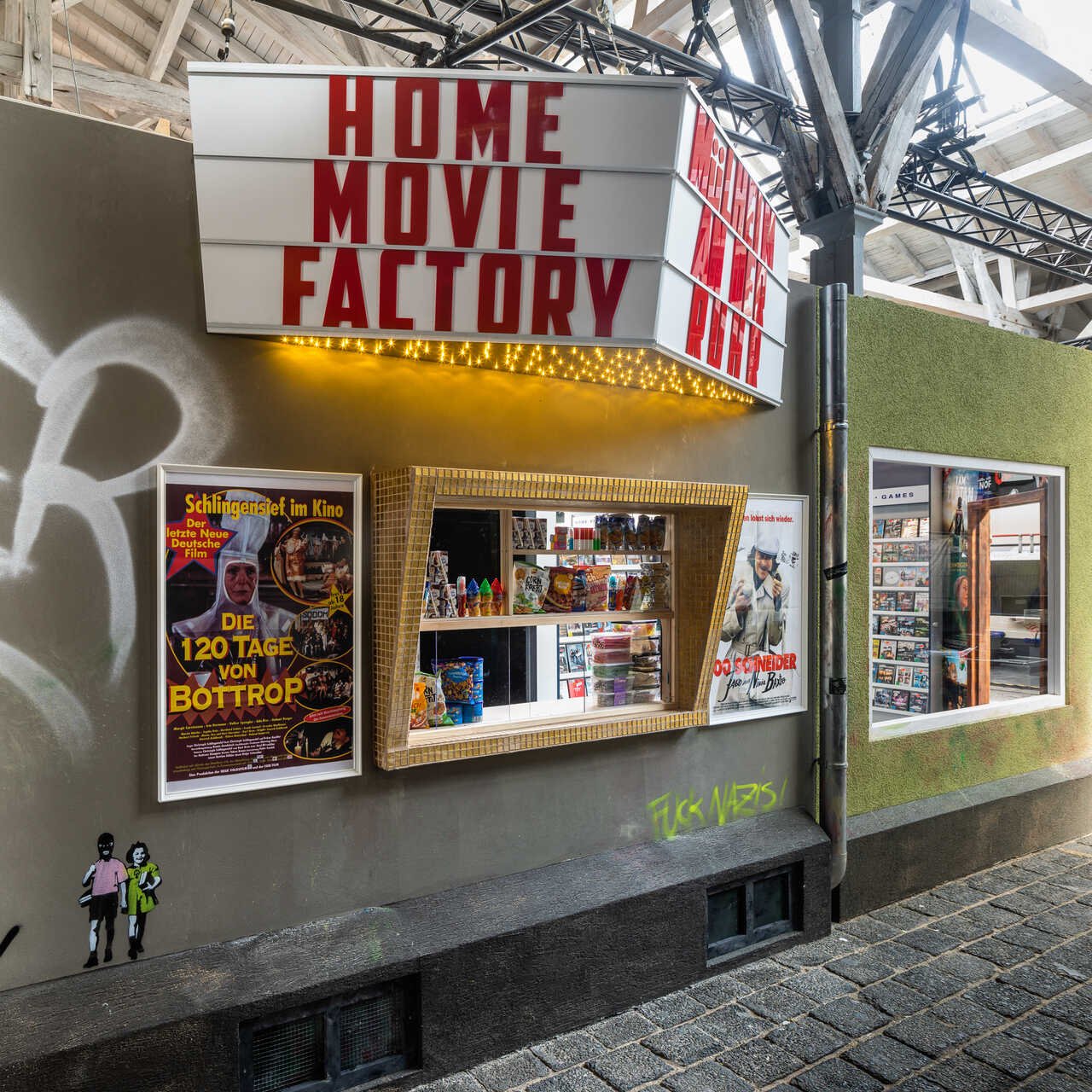

MĆ: Can you describe some of those moments?
BP: For Ruhr Ding: Schlaf (Sleep) we realized some projects which were quite casual, creating a meeting point, like Viron Erol Vert did by reactivating an abandoned kiosk. People lingered on the street corner. Public space was not prescribed but lived. The invitation was simple and threefold: be here, do something, belong. It is never about producing something for production’s sake.
But we also hosted the filmmaker Michel Gondry, whose Home Movie Factory proposed a radically egalitarian model of artistic production: anyone could make a film in three hours. The premise was generous – beautiful set designs, playful rules, and meaningful constraints. Gondry has a talent for identifying the least empowered person in the group and making them central. The group would collectively negotiate genre, tone, structure. Would it be a crime film? A love story? A melancholy song? This was participation as co-authorship, structured yet improvisational. The resulting films were screened in a temporary cinema we built on site. It was community-building, but with limits that made collaboration possible. Total freedom, we learned, is not always conducive to working together.
Perhaps our most ambitious project was Healing Complex (2018-ongoing), conceived with artist Irena Haiduk in Gelsenkirchen. The idea was both utopian and concrete: to use the heat generated by a public oven as the energy source for a public sauna. Irena envisioned the space as one of healing – not for landscapes or rivers, as in many ecological projects – but for people, especially those surviving under harsh conditions. It was, in its conception, a form of social restoration.
We eventually found a site: an abandoned octagonal church. The architecture was already suggestive of ritual and collective memory. The plan was bold. We would create a hybrid space – half bakery, half bath house. Of course, this came with complications in terms of permissions and infrastructure. The oven itself didn’t exist, it had to be invented. So did its protocols and its architecture. We imagined inviting engineers, local residents, and technicians to co-design the oven and the public bath. To co-create a platform for technical, social, and aesthetic collaboration. After two years and various settings we had to end the project due to permit and budget issues.
Manifesta recently announced plans to re-engage with the church and the structures we left behind. They are now preparing for their 2026 edition, and while we had to abandon Healing Complex in 2024, the groundwork remains. Perhaps this is how such projects live on – not as fixed monuments, but as scaffolds others can take up. The oven might yet become real, just not under our supervision.
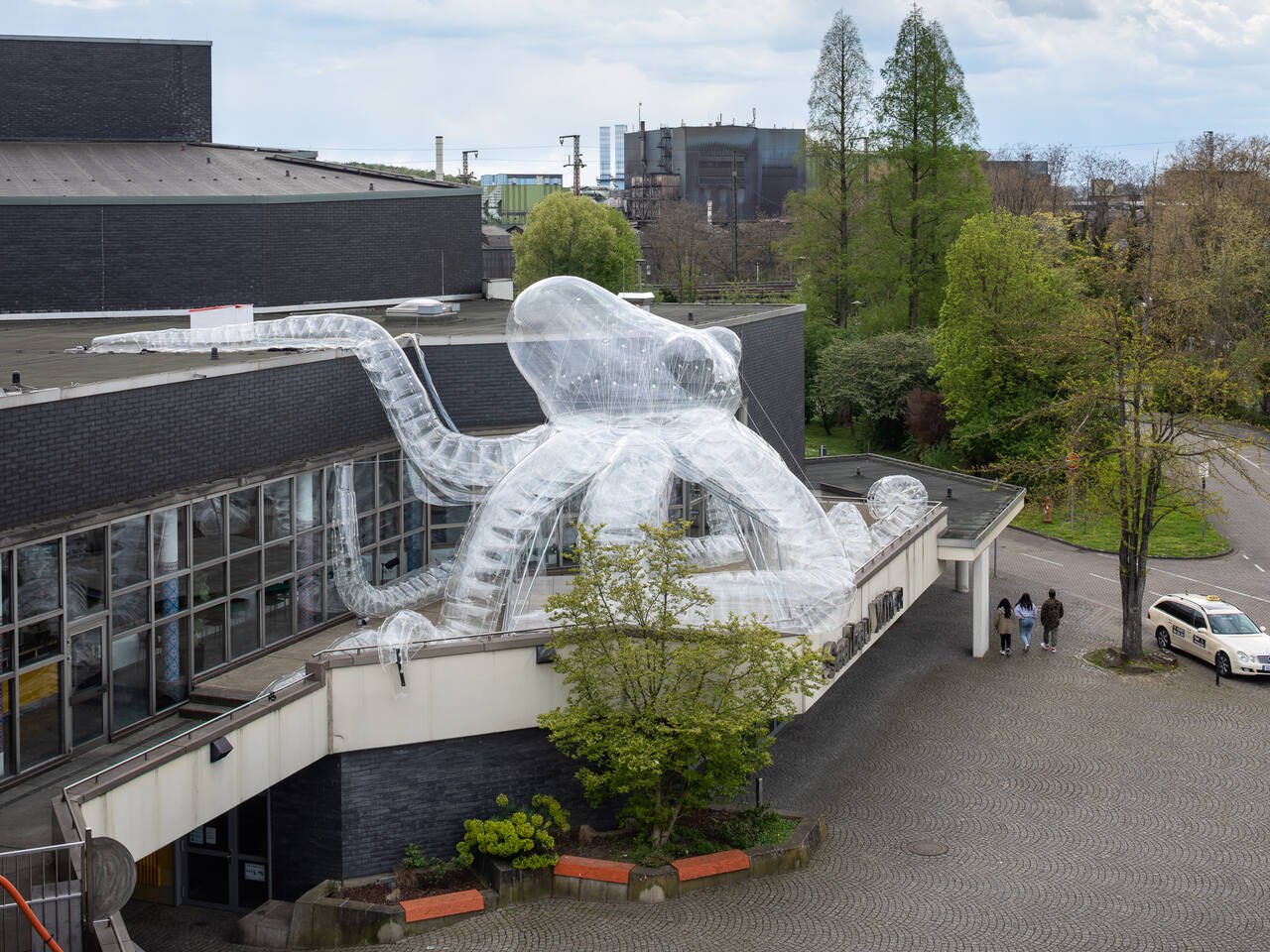
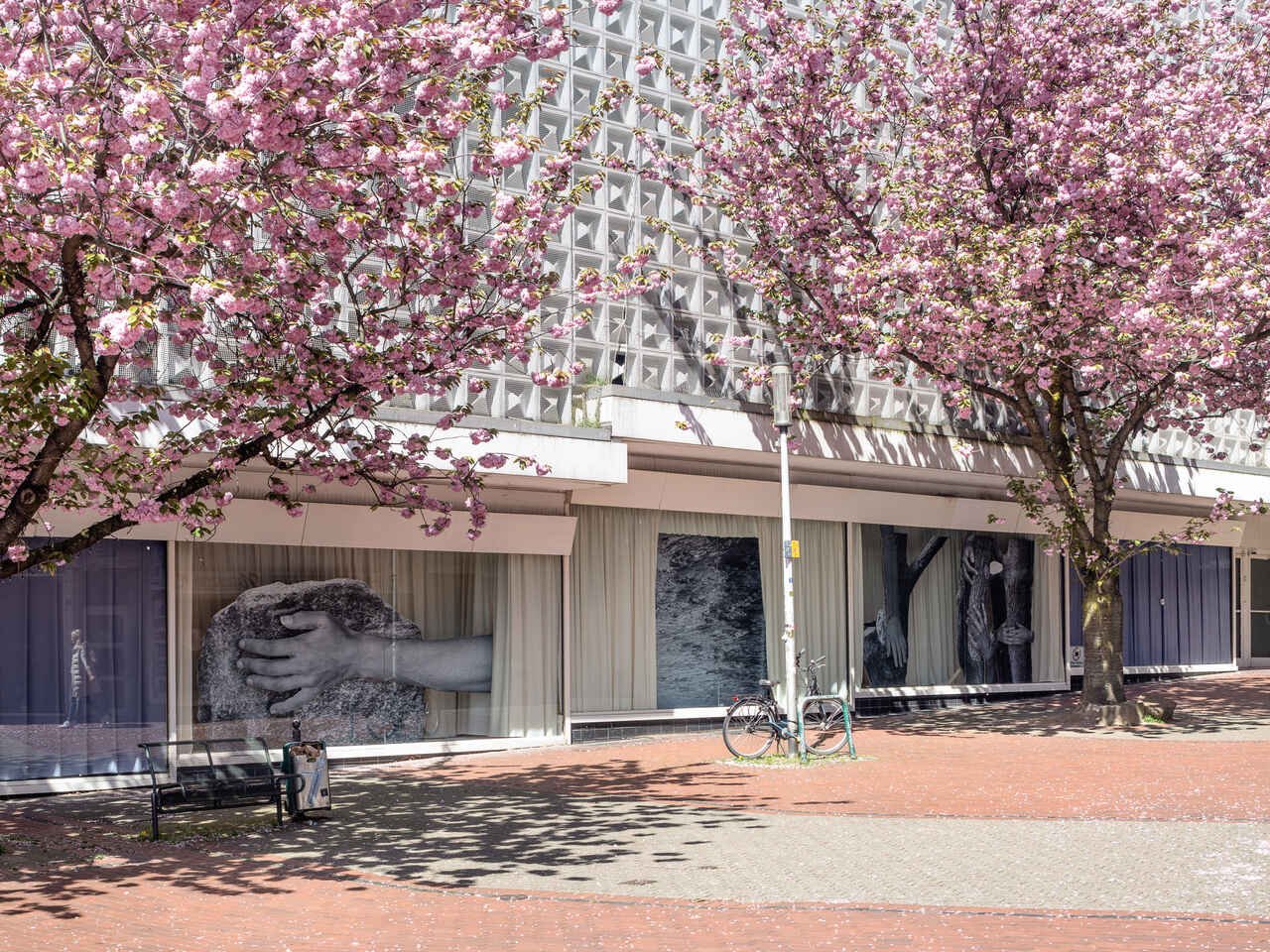
MĆ: As someone both connected to Manifesta and familiar with the region, what was your role in bringing it here?
BP: I was deeply involved in bringing Manifesta 2026 to the Ruhr Area. Later, things – maybe naturally – developed a life of their own. The initial phase felt genuinely meaningful – many of us, from cultural producers to institutional directors, were already cultivating experimental, socially-rooted programming: museum–school collaborations, community-based initiatives, projects that engaged directly with the social fabric of the post-industrial and often precarious landscape we inhabit. The idea behind inviting Manifesta was to gather these existing efforts, bring them into a broader dialogue, and push the local scene to a new level of visibility and cohesion.
The Ruhr Area isn’t a blank canvas – we have a network of over twenty museums, long-standing cultural infrastructures, and unique spaces doing truly experimental work. There’s a very rich cultural landscape in place.
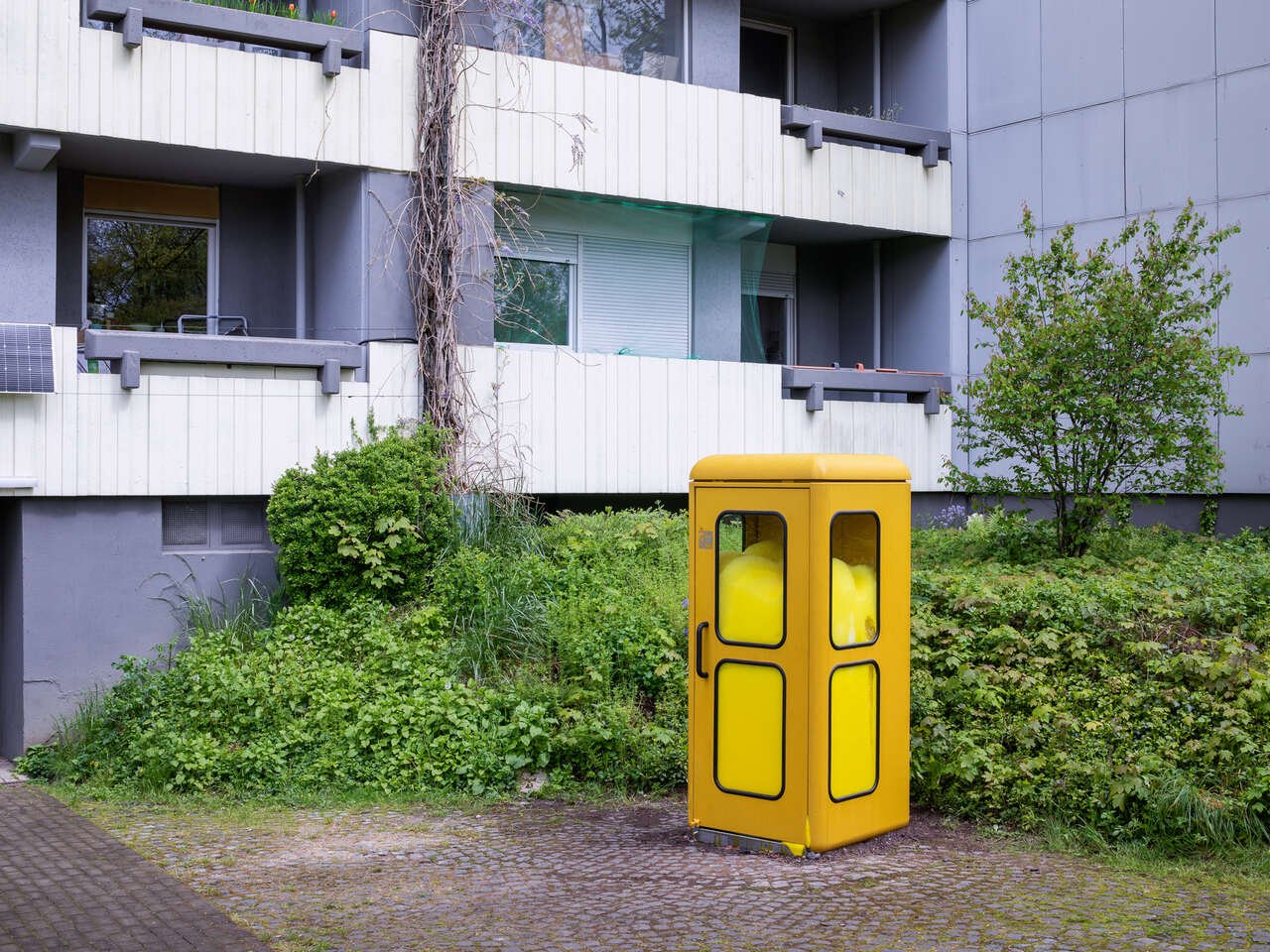
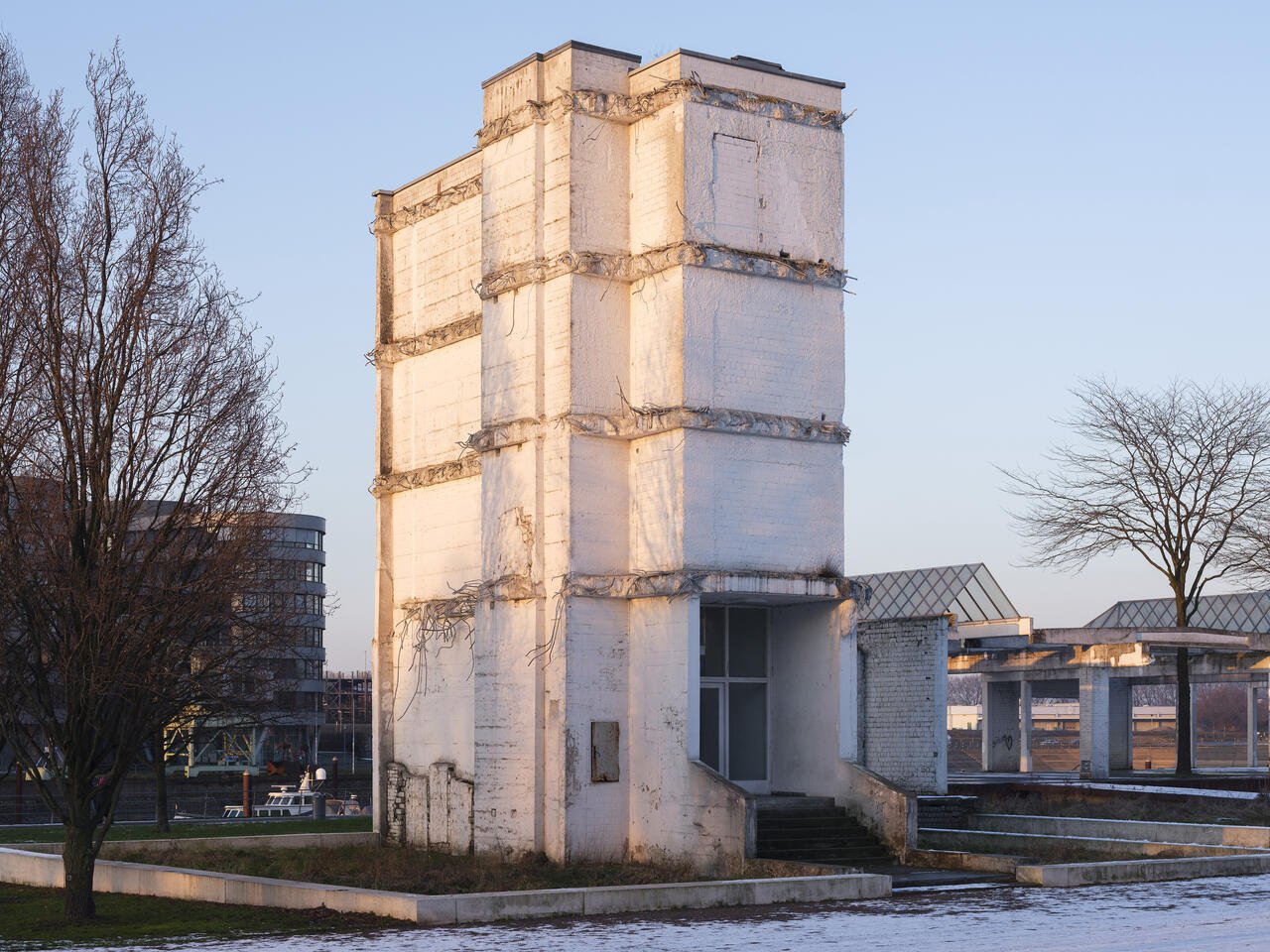
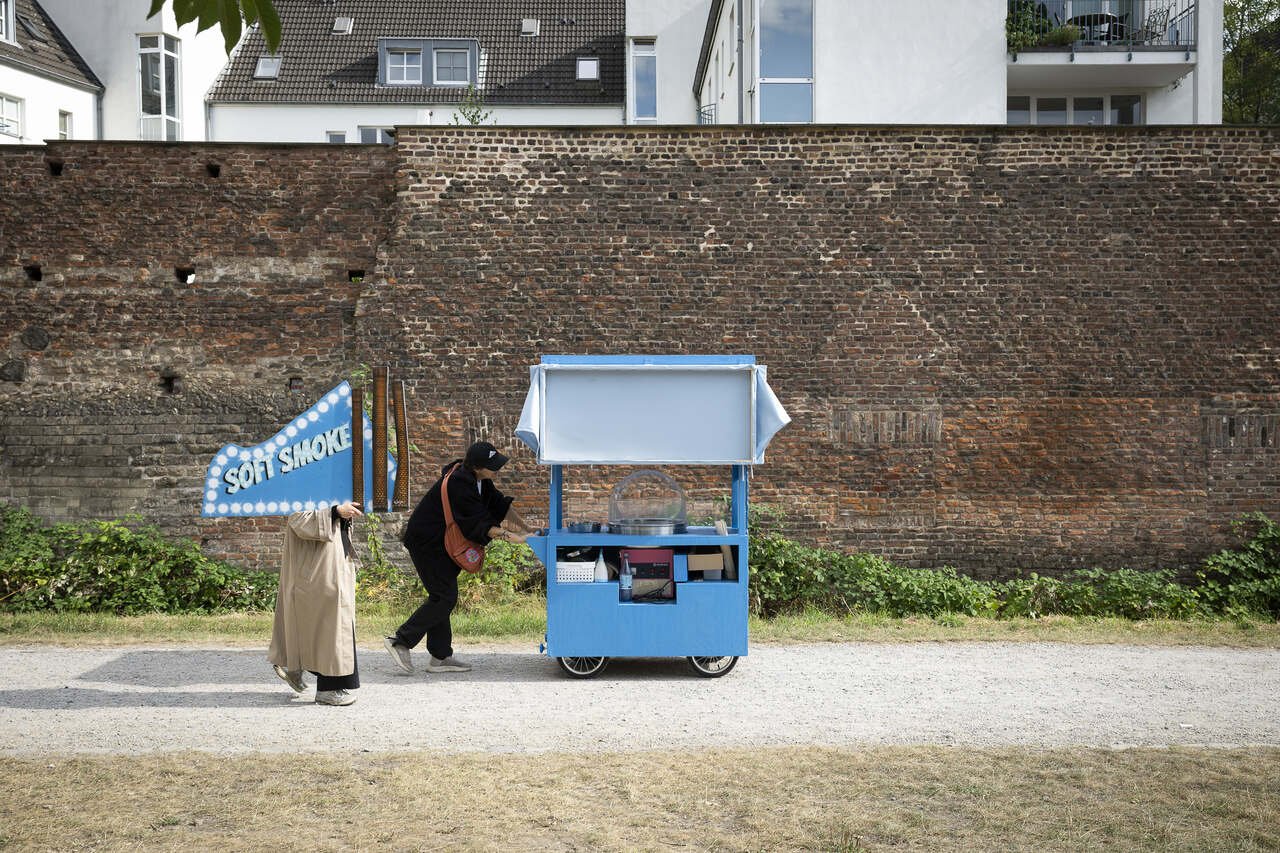

Between the Sacred and the Social: Reclaiming Space in the Ruhr Area
MĆ: It seems that with your projects, you’re attempting to bridge a persistent gap – between lived, real-world experience and the frameworks of the art world, particularly within public space. Would it be fair to say that you’re consciously working within this tension? That you’re not only aware of the divide, but actively trying to complicate or even reconfigure it?
BP: I love the complexity of art. This is where I really connect with someone like Claire Bishop. I love that art has the capacity to release so much energy, so much thinking. It’s not immediately applied, not instrumentalized in its outcomes—and that’s exactly the point. At the same time, I know that working in public space means engaging with a wide range of people – not just audiences, but also the city, the parish, the people who manage the greenery or the public infrastructure. You’re never independent as an artist or project; you’re always entangled, always dependent on others. That’s the reality.
But then again, we’ve also played with that at the level of art. And when it works, it’s powerful. Through these processes, we’ve seen that there are people who truly value this kind of freedom – the freedom to think differently, to momentarily step outside of the daily pressures, like the constant pushback: “You don’t get funding because of this form,” or the unrelenting message that you don’t contribute, that you don’t belong. If you can mentally retreat from that constant low-level humiliation – even just slightly – then yes, this is how art can function: as a mind-opener. Suddenly there’s space to appreciate something, or to imagine something entirely else.
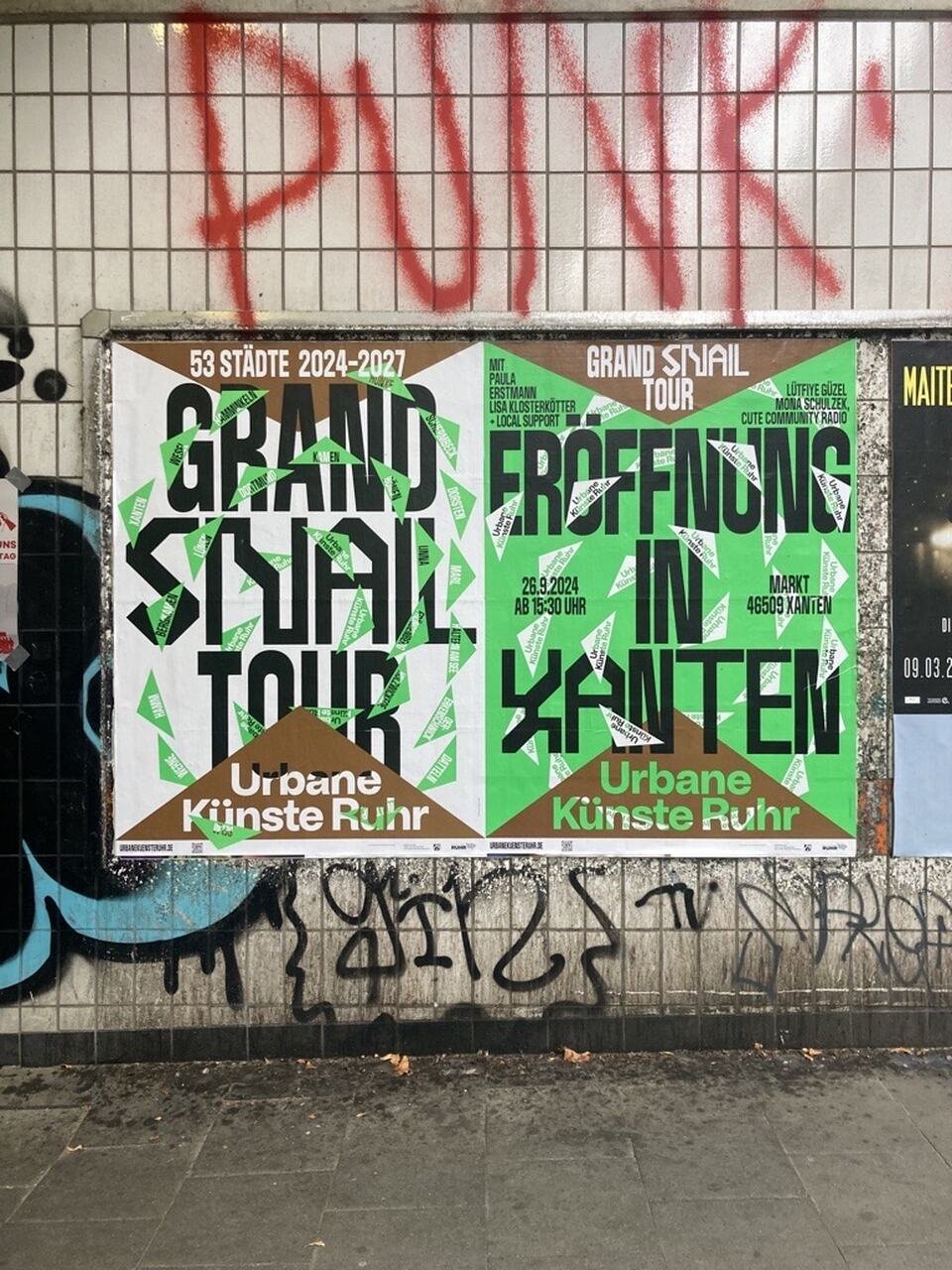
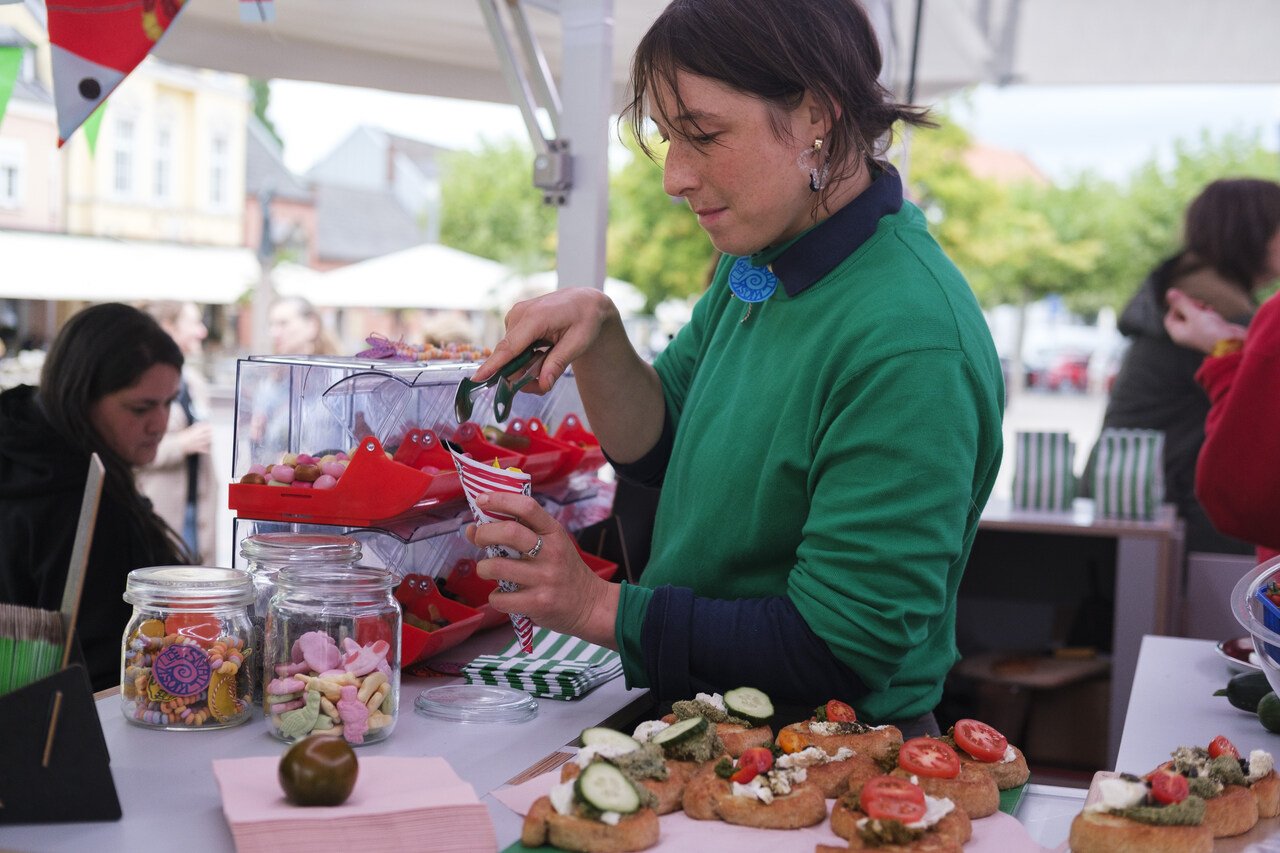
MĆ: The Grand Snail Tour is an ambitious three-year project that comes with a mobile event and exhibition space and that visits all 53 cities and communities of the Ruhr Area. How did you come up with this concept?
BP: After Corona I started looking for a more flexible and sustainable format than the Ruhr Ding – one that differs from setting up a huge exhibition for a short amount of running time and then dismantling it again. The idea was to approach people through the means of art, rather than trying to attract visitors who then travel to see a stationary exhibition. The concept of course relates to a long tradition of traveling artists, but it also works like a fairground or a circus. It is crucial that we don’t just show up at a random location, but that each stop is an artistic exploration of the location. We want to incorporate the circumstances into the design, regardless of whether it is a central town square or a wasteland on the outskirts. Our goal is to create a space for encounters, a place for exchange and imagination.
MĆ: Within the Grand Snail Tour, there’s a dedicated position for an outreach curator. I’m curious – was this role already embedded in your institutional framework, or was it conceived specifically for the Grand Snail Tour as a way to expand its social scope or deepen its public engagement?
BP: The outreach curator position within the Grand Snail Tour was created specifically for the project. It’s about preparing the ground – because, as you know, most pop-up formats tend to operate with very short timeframes: a day, maybe half a day. But in our context, things are far more complex. Even the simplest activation takes around six months to prepare. There are logistics – booking spaces, making announcements – but also the slower, more delicate work of involving the right people and identifying communities that might want to engage. That’s where Julian Rauter, Curator for Outreach, comes in. He works closely with these groups and also acts as a kind of second lens on the project – double-checking, for example, whether the visual or verbal language we’re using actually resonates. Is it legible to the people in the city or does it feel like it’s still speaking mostly to the art world? That’s what defines his role as outreach curator: he’s looking through the lens of the community, not just the institution.
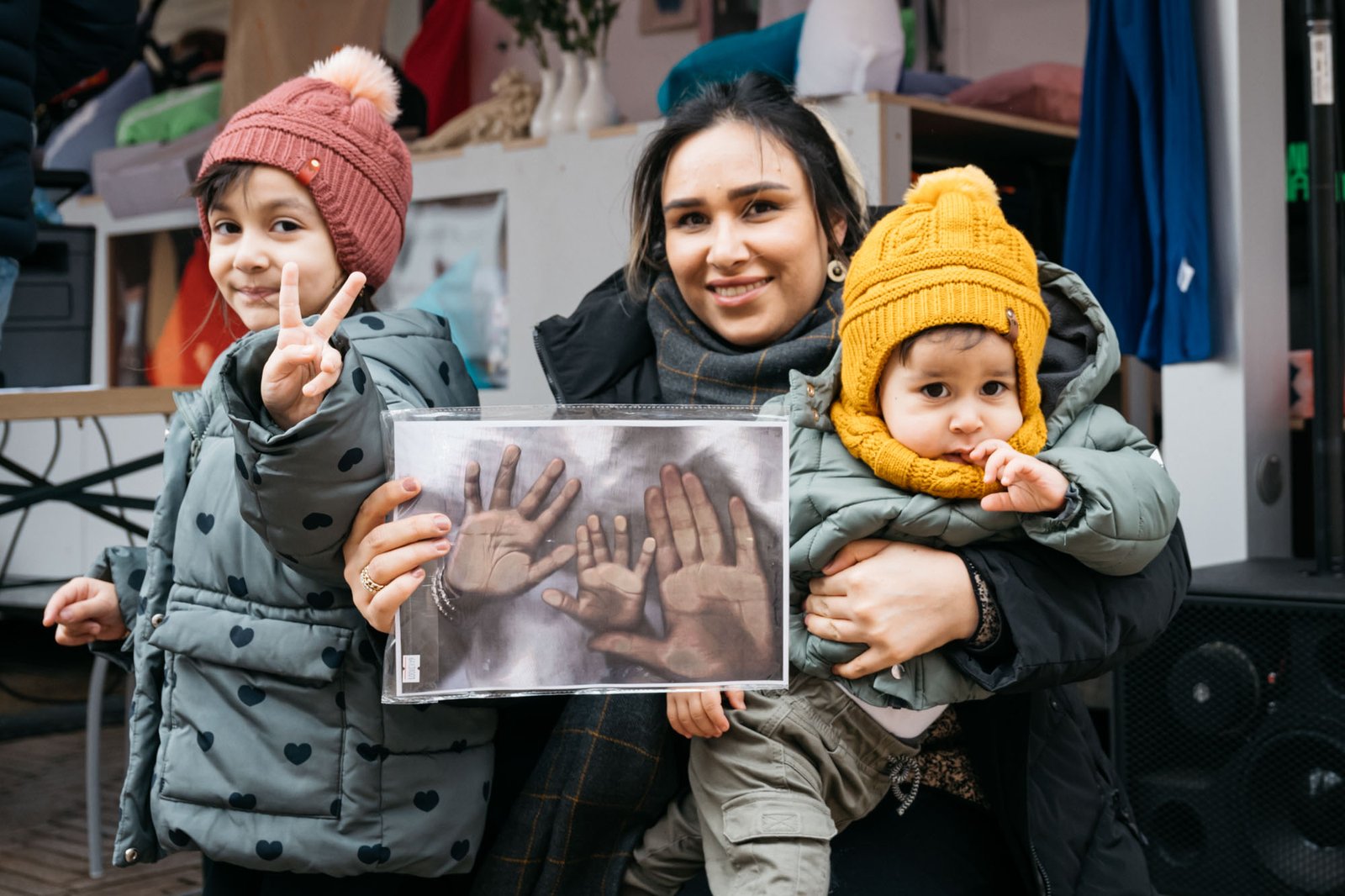
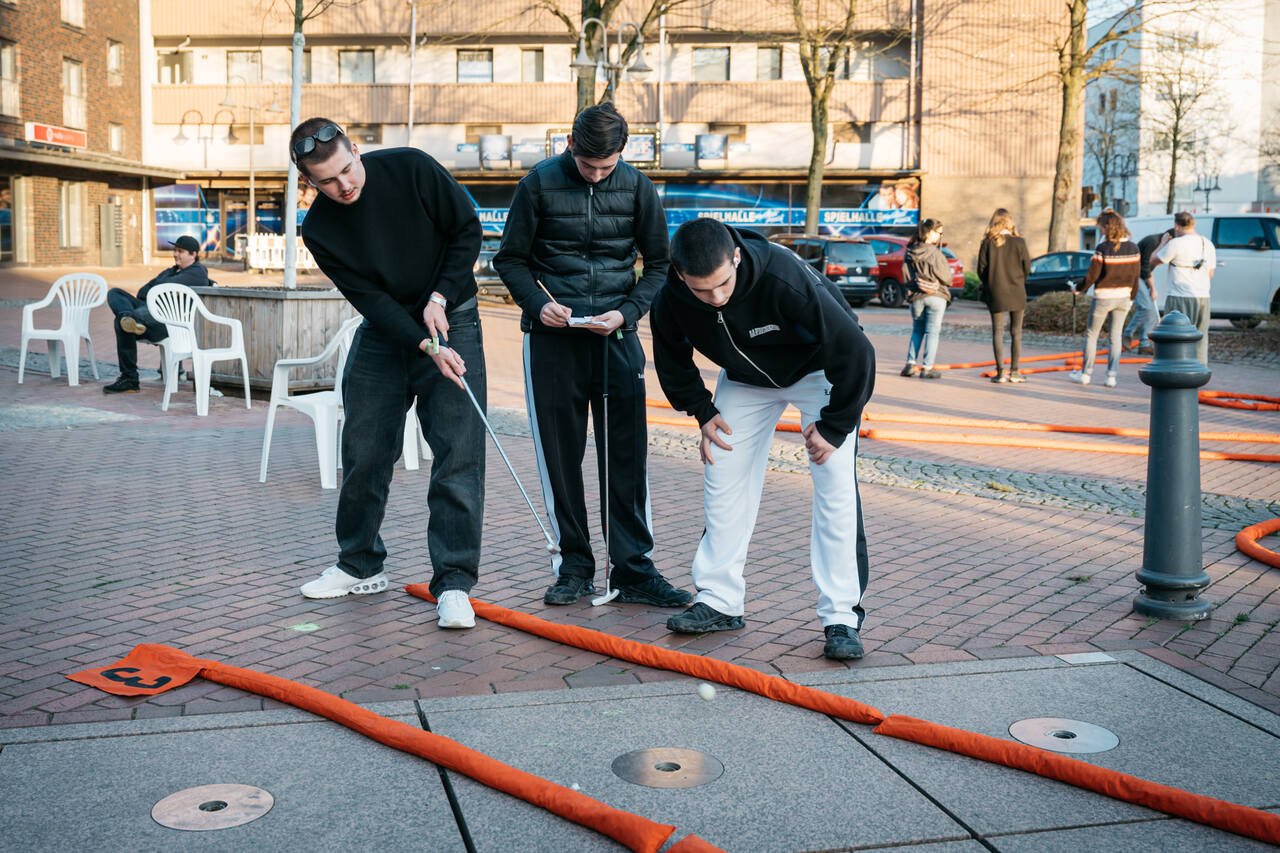
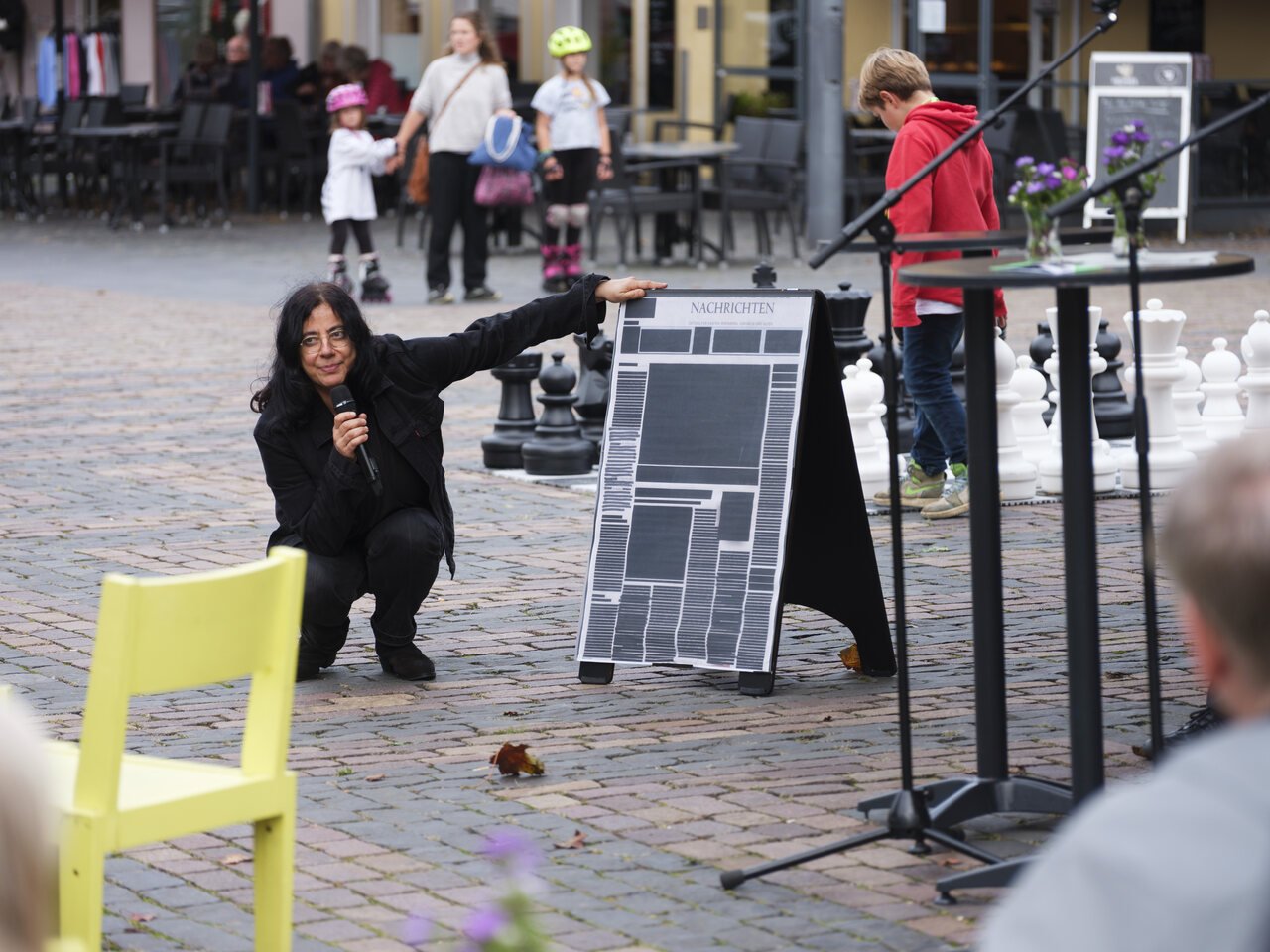
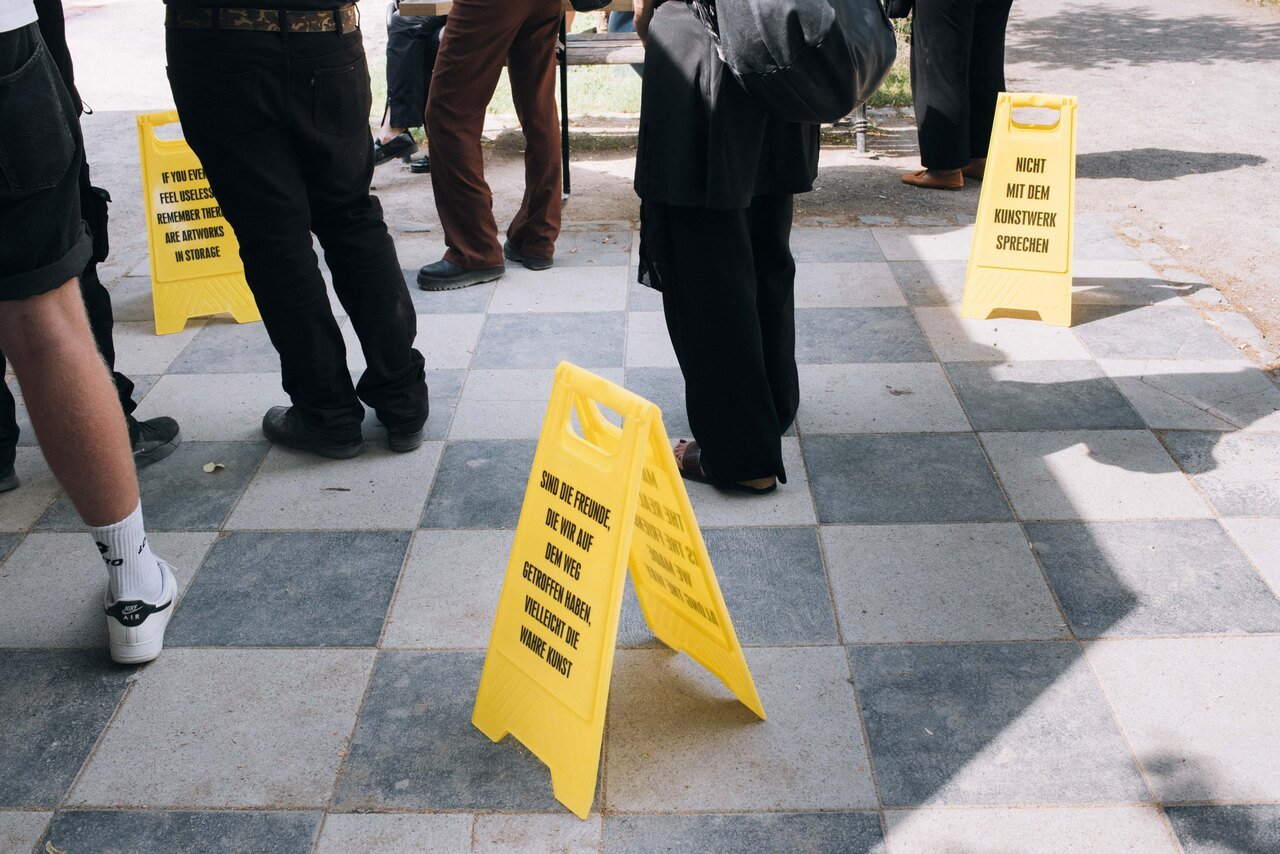
MĆ: I’m also curious about how you conceive of your audience – because the public you’re engaging with through the Grand Snail Tour is, in a way, an analogue public: rooted in physical presence, human-to-human interaction, embodied exchange. But given the ongoing evolution of posthumanist thought and digital culture, do you imagine the Grand Snail Tour might eventually make a stop in the digital sphere as well? Could the tour extend into non-physical, posthuman terrains?
BP: At the moment, we’re mainly using the digital space for announcements and documentation. From the beginning, I had the idea of the Chronicle – not as a straightforward documentary record of the tour, but as something that could endure. So now, for each stop, we invite a guest – someone from photography, drawing, or another field – who happens to be in the same city at the same time. They’re not there to cover what we’re doing directly, but to create a parallel or adjacent perspective.
Some stops explicitly pose questions around the digital. There are works, for example, that invite reflection on surveillance and digital infrastructures. One work by Aram Bartholl uses surveillance cameras that constantly search for Wi-Fi signals. As they fail to connect, the piece emits a kind of glitchy, irritating sound: “connection could not be made.” It becomes this haunting, mechanical chant in the background. What passersby see is a chandelier-like structure made of surveillance cameras, always in motion, always failing to connect. It’s a subtle but effective entry point into questions of digital communication, broken signals, and systemic disconnection.
The chance to communicate in person, however, is one of the huge benefits of the Grand Snail Tour. We travel with a team of mediators, which are open to talk not only about art and the tour itself, but about a lot of things. We did some trainings to cut off right-wing extremist talks, but until now luckily, we had very little experience in this direction.
MĆ: With the Grand Snail Tour, you’ve employed slowness and mobility as artistic tools. How do these concepts relate to the lived experiences of immigrants in Germany today? You’ve touched on this already – particularly around the theme of precarity – but I’d love to hear you expand further on how these strategies intersect with questions of visibility, belonging, or systemic navigation.
BP: I’m very interested in the changing political climate – a shift to the political right that I fear will only worsen in the next three years. By touring, we’re also tracing the shift across regions – starting in the West, moving North, now East, and soon the South – until we arrive at the center. It’s like a spiral or a snail shell. And that movement, that slow tracing, is important.
For me, it was more that I’ve always been drawn to long-term projects. I always looked to case studies where, on the surface, not so much happened, but everybody knows that the time in-between is artistic material as well, as it is for example the case with John Cage`s composition, ORGAN²/ASLSP, for the duration of 639 years in a church in Halberstadt. And you shouldn’t forget that I worked as curator for Skulptur Projekte Münster, an exhibition that happens only every ten years. I’ve always liked that long breath. I like projects like this. The American artist Maria Nordman planted seeds in Münster in 1991, and then thirty years later it becomes a forest. That kind of timescale speaks to me. I also love the conceptual artists from the ’60s and ’70s. Take someone like On Kawara – when he did projects like I went, I met, I read he would draw the paths he took every day or the persons he met. He absolutely was committed to it, but sometimes he didn’t do it – he’d make exceptions. That’s the same logic I’m applying with the Grand Snail Tour. We say it happens every second or third Thursday. But sometimes we stay longer. Sometimes we make exceptions – but the baseline remains.
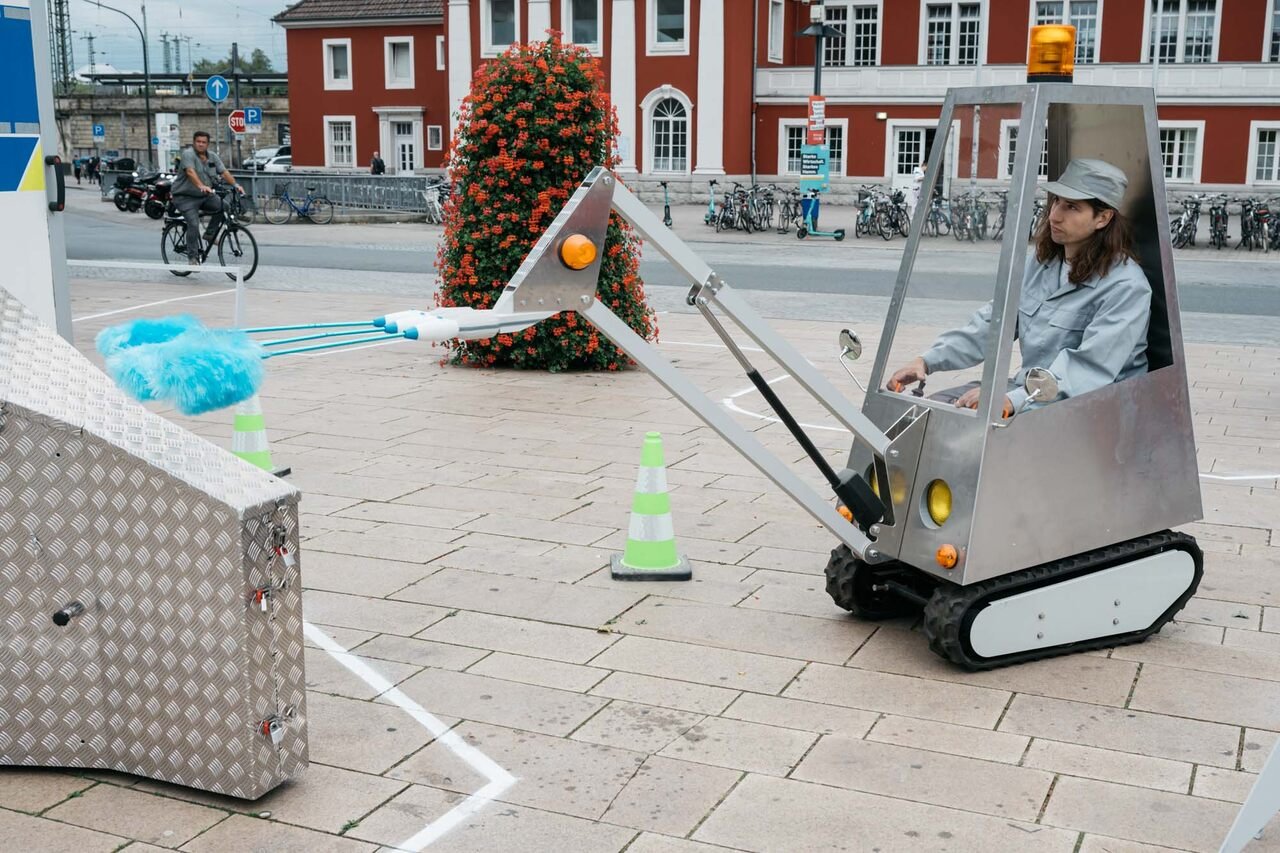
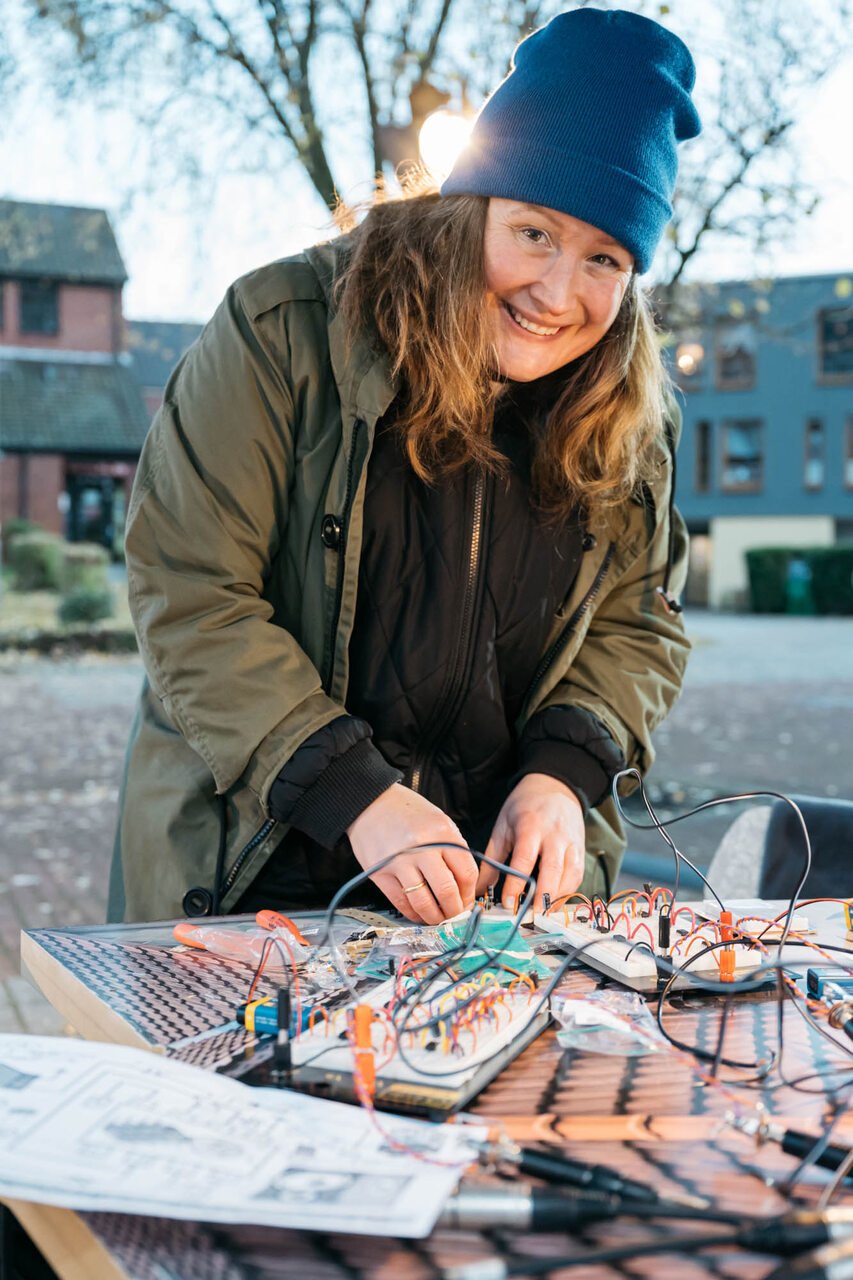
MĆ: What role does mobility play in this equation?
BP: Mobility is also a challenge for me. I come more from the field of sculpture and installation. But when COVID hit, I was totally disoriented. We had an exhibition that couldn’t be shown for over a year. When we were finally allowed to open, different infection rates in each city meant some venues could open and others couldn’t. I tried to move everything into public space, but in Germany it was incredibly strict – even three people couldn’t gather. I felt it was absurd.
And right after that came the war in Ukraine. Both were deeply traumatic. That’s when I realized: you cannot prepare ten years for an exhibition only for it to vanish – and for the world to shift entirely in the meantime. Everything became unreliable. That should fundamentally change how we think about artistic concepts.
So the Grand Snail Tour became an attempt to build a structure – but one with more flexibility. Yes, we plan about four to six months ahead, but we allow for more spontaneous shifts in rhythm, in tempo, in content. It’s also more open to integrating the local art scene. In the past, I worked more internationally – artists came from abroad and we had large installations. Now it’s smaller in scale, more performative, and allows for local collaboration across multiple stops. That possibility of recalibration – of learning from one stop and adjusting things by the next – is something I really value. It is something I learned from Healing Complex, the ability to change the concept while already in motion.
MĆ: I’m particularly intrigued by the forthcoming Grand Snail Tour collection you’re preparing. Could you elaborate on the conceptual framework and curatorial intentions behind it?
BP: The collection of artworks develops over time. And it is interesting because it’s mobile, it’s low key in a way, but in the end, after three years, we’ll have a substantial collection. We work together on that with artists like Nils Norman, Kasia Fudakowski, Stefan Marx or Anna Viebrock. For me, that’s really fun. The idea of a traveling exhibition, of occupying space differently – everything that we use for our stops and that’s connected to our multi-functional trailer, is made by artists.

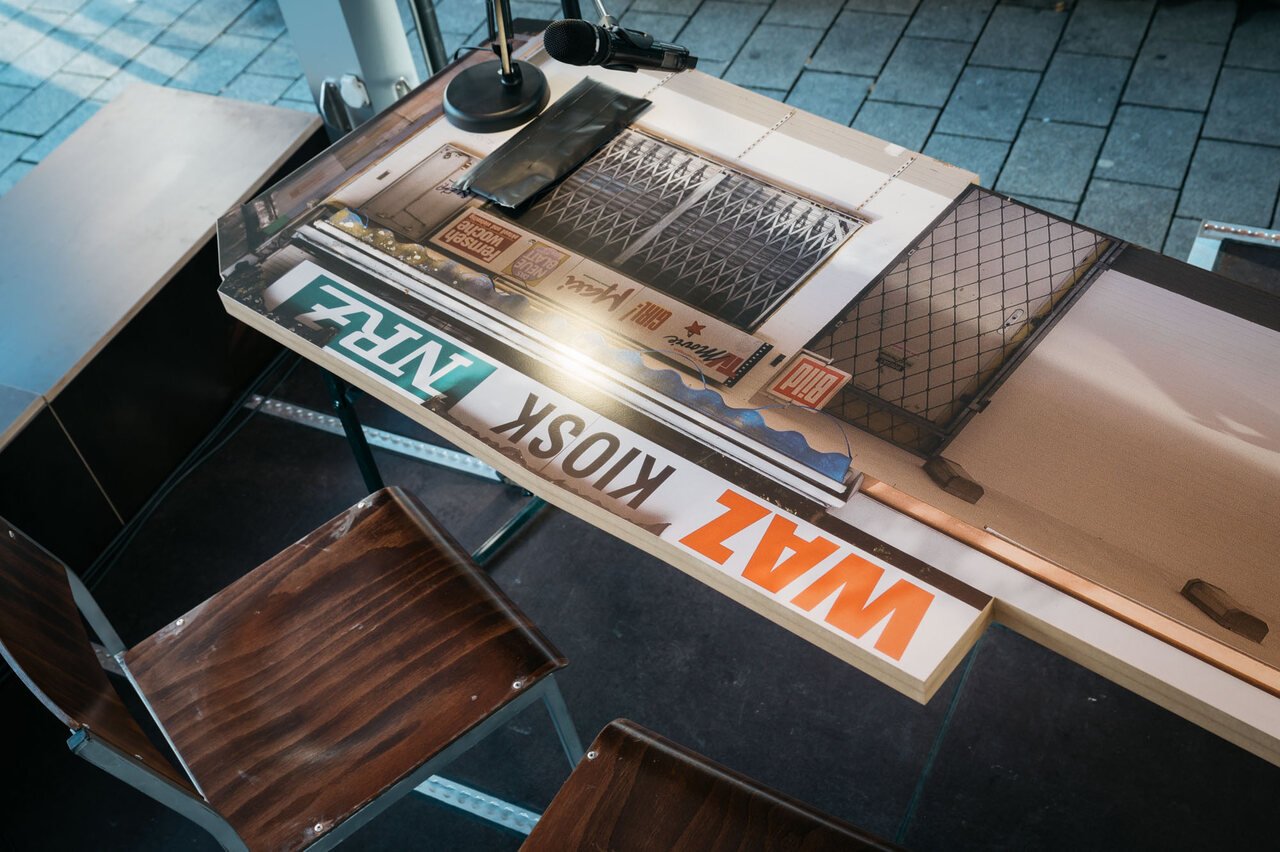
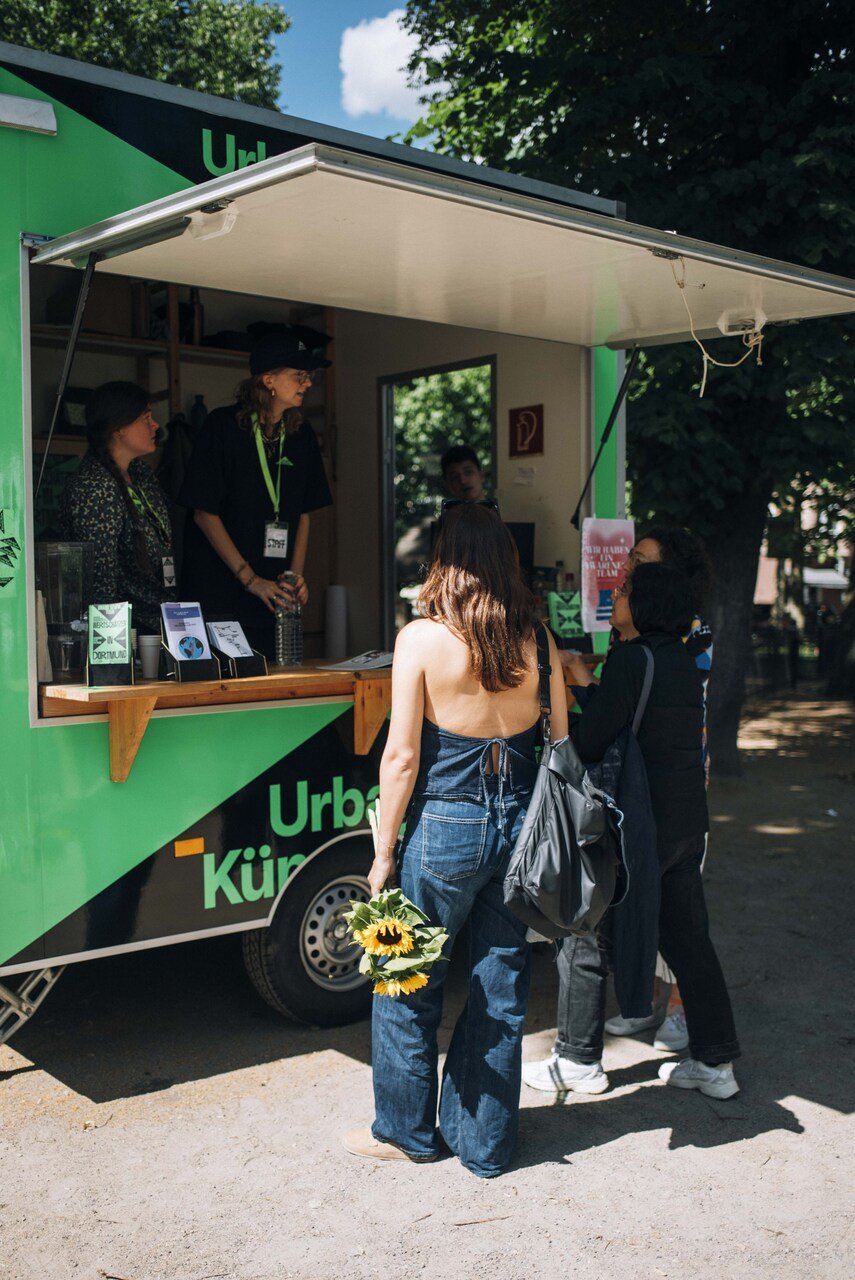
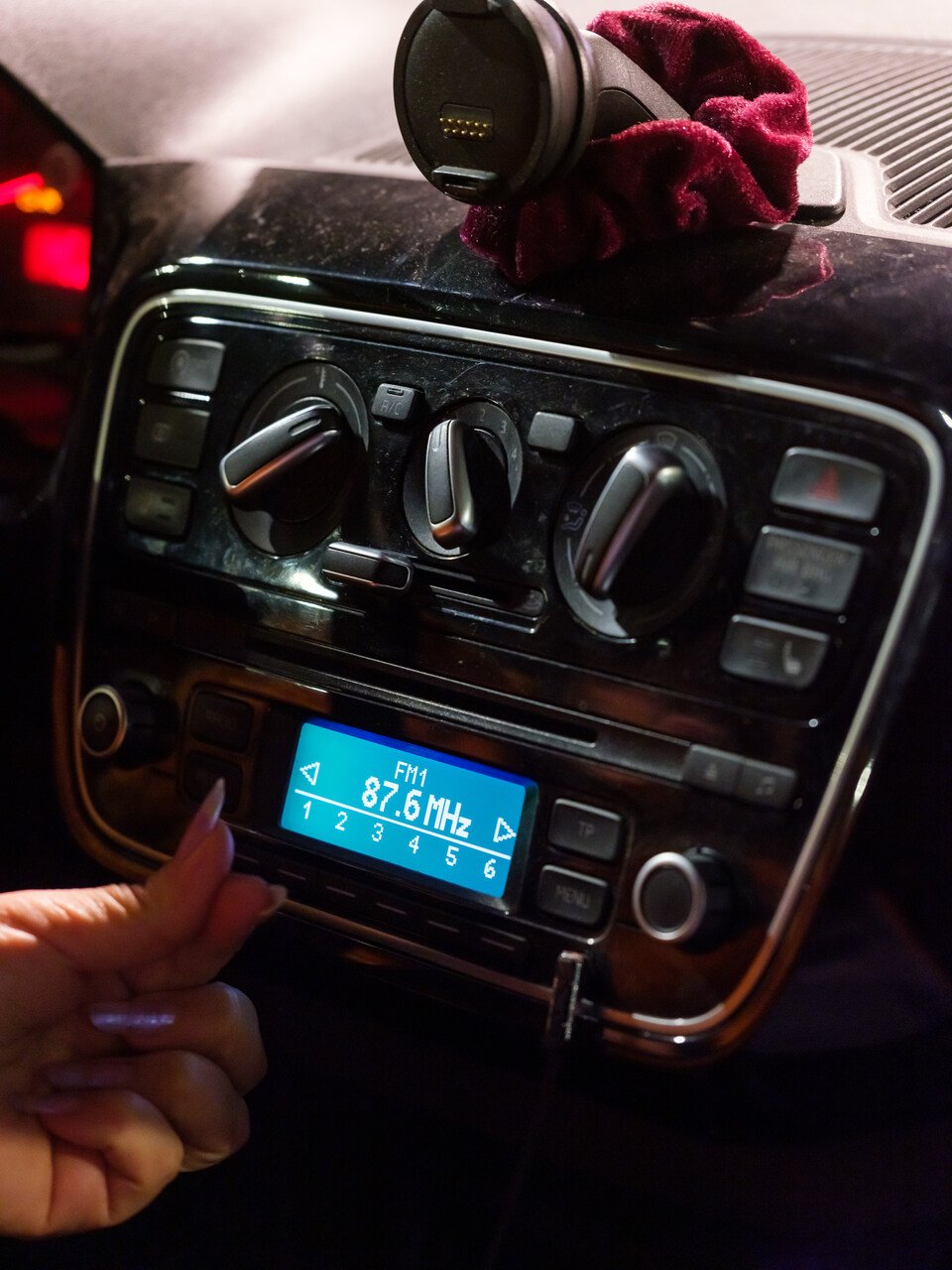
MĆ: In what ways did your collaboration with Kasper König during Skulptur Projekte Münster in 2017 shape – or perhaps challenge – your curatorial approach to working in public space?
BP: Before I met Kasper, I had already had a career in the independent scene of Hamburg. We worked together quite well, and I learned a lot from him – but more in terms of, let’s say, staying committed to certain principles. For example, trust: trusting the artists, not getting too caught up in the management side of things. That might be the most important lesson – remaining focused on the artistic process itself, really engaging deeply with the development of each project, with the tools, and making sure things are well realized, not just finished for the sake of completion.
When it comes to public space, it’s hard to measure exactly how much that experience influenced me. Skulptur Projekte Münster is, in a way, more institutional – since it happens only every ten years, public space in that context is curated quite differently. It’s public, but in a more structured sense. Here, where I work now, it’s more public public, I would say – more open, less mediated.
MĆ: So, you came as an independent curator from Hamburg who managed to enter what we might call the hardcore institutional art world, right?
BP: We actually met at a symposium about art in public space. I gave a short speech that day – I was a bit angry about some developments happening in the city of Hamburg. I was quite direct and argued what I disliked. Kasper König liked that honesty and then asked if I wanted to visit him in Berlin. Later he asked if I wanted to join him as curator in Münster. I was quite surprised. But that’s also Kasper for you. He was always open to working with someone who wasn’t fully institutionalized or defined by the usual institutional habits and formalities – the dos and don’ts, the bureaucracy, the restrictive procedures.
At that time, I had very little knowledge about how things work in bigger institutions with a lot of specified positions. In the project based independent art scene everybody does a lot of things at the same time: curating, press, bookkeeping, fundraising etc. And sometimes the institution acts like a pair of scissors in your head: “No, we can’t do that because the insurance doesn’t cover it.”
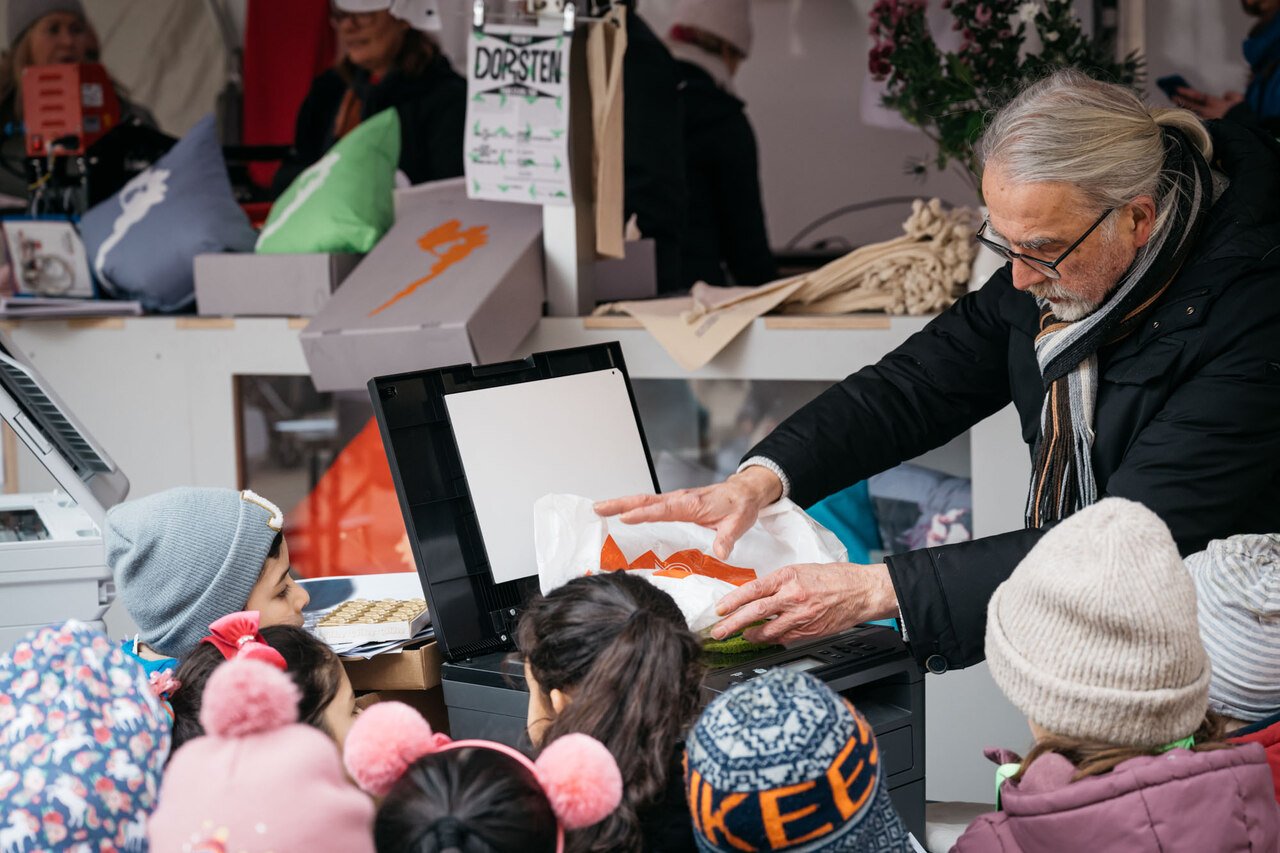
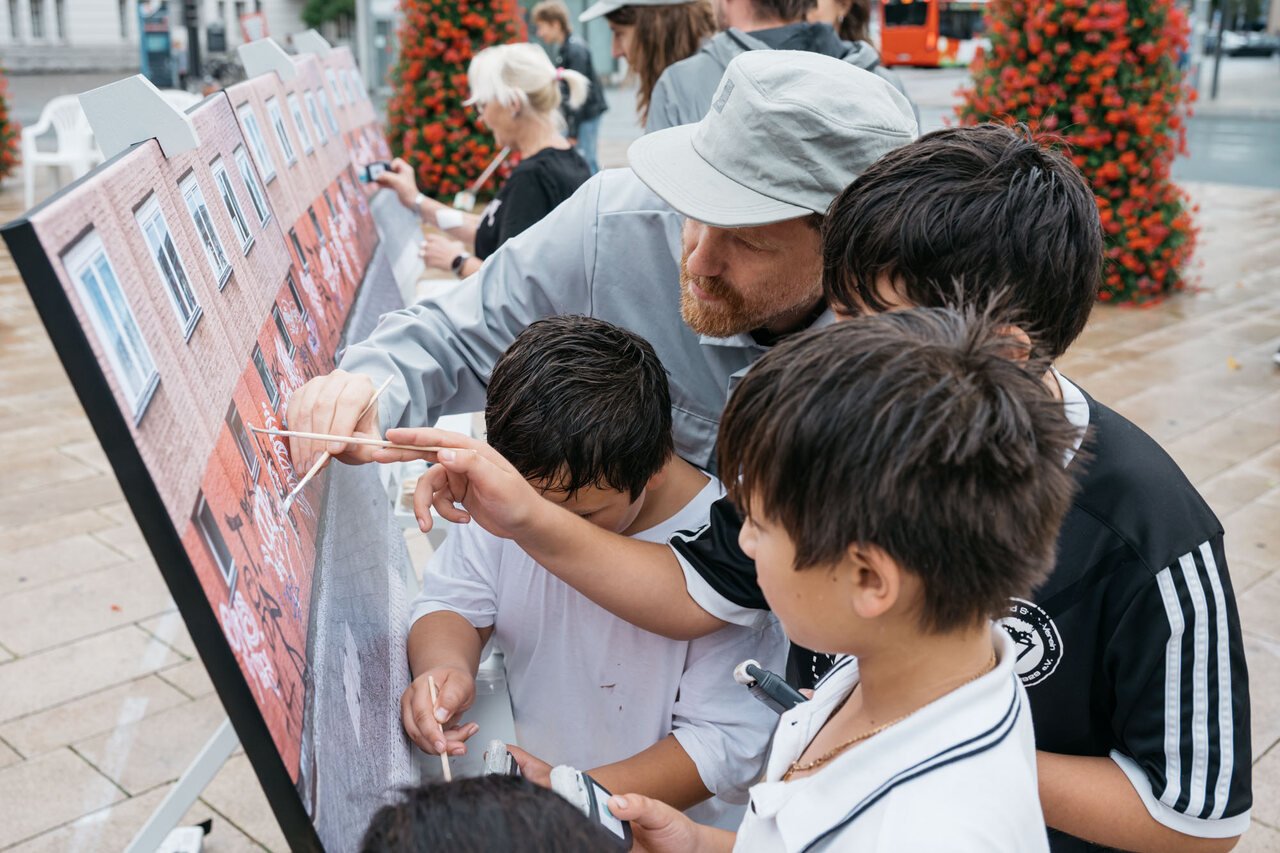
MĆ: When you think about the future, what kind of curatorial legacy do you hope to leave behind?
BP: I don’t know – I mean, it still feels early to talk about legacy, of course. But I do think about this kind of cultural amnesia – how projects that once existed can so easily be forgotten. What matters to me is when I meet people who remember a project, something that was part of an exhibition, maybe back in 2019 or earlier. That recognition – of the experience, of the work, not necessarily of me personally – is meaningful. It’s about collective memory. When people remember certain projects, or moments when something became possible, that kind of remembrance feels very valuable.
MĆ: Could you elaborate on this?
Sometimes I feel like the ground we’re working on is shrinking. Yes, there’s the broader political discourse, but there’s also increasing pressure – from institutions, from politics – especially in Germany. I often think about the 1960s and’70s, when so much was possible. There was a spirit of experimentation, and some incredibly powerful, radical works were produced – works that still feel generous and full of agency. If there’s a sense that “things were once possible,” then perhaps it also nurtures a desire to make those things possible again. That’s something I’d like to leave behind.
So maybe my legacy – if I can call it that – would be in these remembered projects: people talking about different programs, different pieces, and each person having a different favorite. That feels like a good sign. When no one agrees on “the best” project, but everyone remembers something different they loved. That, I think, is a good exhibition.
MĆ: Since your role has been extended through 2027 – a clear recognition of your previous work – what are your main curatorial goals for this extended period?
BP: We have the two large ongoing projects, the Grand Snail Tour and each year a larger site-specific exhibition for the Ruhrtriennale, which is currently connected to our residency program. I really enjoy working in the Ruhr Area, and I value the cooperation with my colleagues. Many collaborations are very rewarding. Yesterday’s event in Dortmund felt almost magical. Together, with all our combined efforts, we came up with new ideas about art and public space, and how to work on them collaboratively. That’s something I’d be proud to be part of in the end.
MĆ: Is there a message you’d like to share – or a particular attitude you hold – toward the crisis that’s unfolding?
BP: Fight, embrace it – don’t give up on yourself. But also, don’t forget to have fun and to stay close to the ones who love you.
Urbane Künste Ruhr: Three Days in Dortmund: https://vimeo.com/1111696066

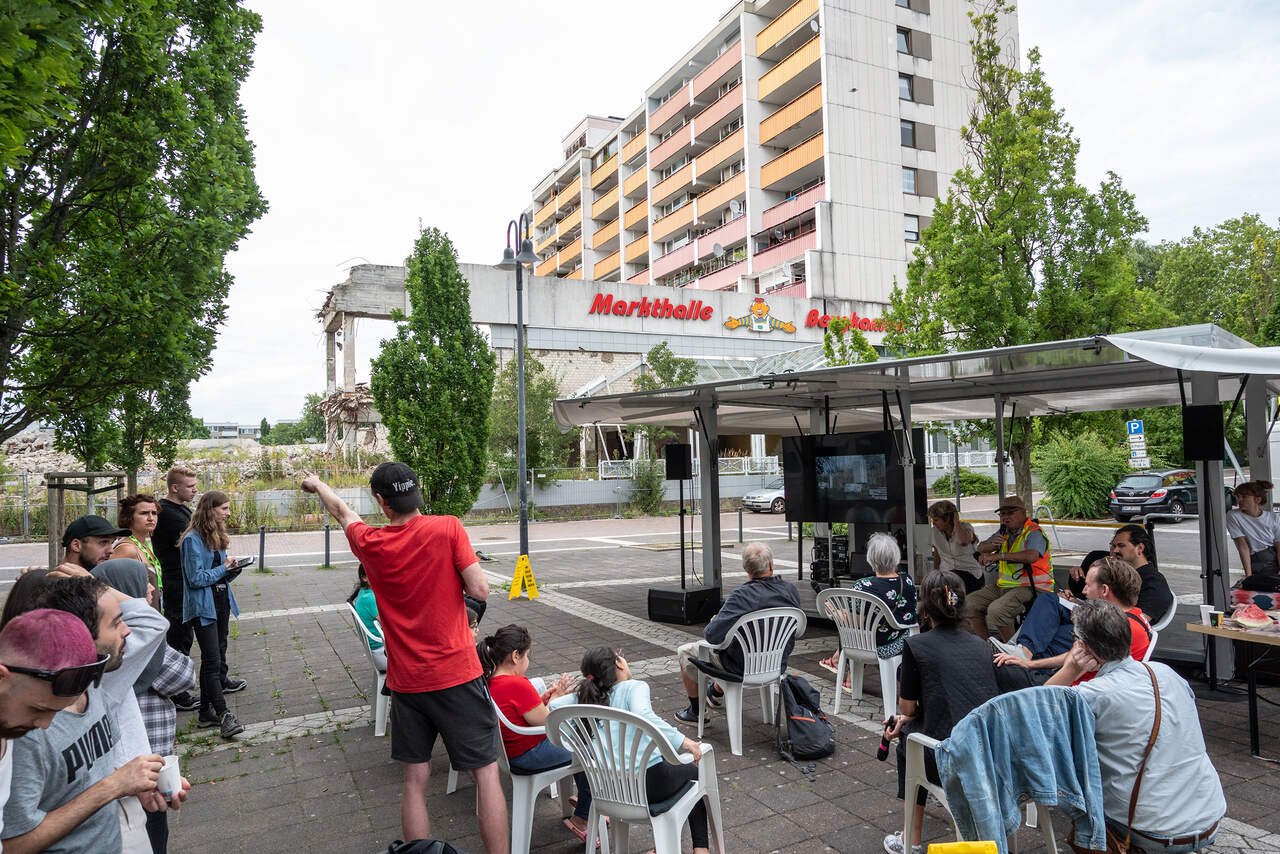
Britta Peters works as a curator specialising in art in public spaces. She has been the Artistic Director of Urbane Künste Ruhr since January 2018. Previously, she was the curator of Skulptur Projekte Münster 2017 in a team with Marianne Wagner and Kasper König as the Artistic Director. With a background in Cultural Studies, she has curated various major exhibition projects in Hamburg, including as director of Kunstverein Harburger Bahnhof from 2008 to 2011. After the exhibition Demonstrationen. Vom Werden normativer Ordnungen 2012 at the Frankfurter Kunstverein, in 2014 she curated the project Krankheit als Metapher. Das Irre im Garten der Arten at various locations in Hamburg. Peters has participated internationally in numerous committees, events, and publications on the topic of art in public space and has taught as a visiting professor at the Academy of Art in Münster.
Urbane Künste Ruhr is a decentralized institution for contemporary art in the Ruhr region that creates and sustainably explores public spaces in various formats. Under the artistic director Britta Peters it initiates exhibition projects for specific locations and situations, programs for guest artists, and the experimental Grand Snail Tour through the region. Many projects are carried out in collaboration with local, national, and international partners. Alongside Ruhrtriennale, Tanzlandschaft Ruhr, and Chorwerk Ruhr, Urbane Künste Ruhr is part of Kultur Ruhr GmbH, based in Bochum, whose shareholders and public sponsors are the state of North Rhine-Westphalia and the Regionalverband Ruhr.
Maja Ćirić is an independent curator, art critic who ignites conversations between art, technology, and power on a global stage. With a Ph.D. in Art and Media Theory from the University of Arts in Belgrade, she brings sharp intellect and fearless vision to the evolving intersections of culture, computation, and geopolitics.A curatorial trailblazer, Ćirić has curated and commissioned the Serbian Pavilion at the Venice Biennale (2007, 2013) and led international projects such as the BJCEM Mediterranea Biennale (Tirana, 2017) and the 20th Pančevo Biennale (Serbia, 2022). Since 2020, she has been pioneering phygital (physical + digital) exhibition formats and cross-disciplinary collaborations that expand the boundaries of curatorial practice and artistic experience.Her writing and commentary appear in Artforum, Flash Art, Artmargins Online, Third Text, Passe-Avant, springerin, AWC, Obieg, and Sternberg Press, Routledge, where she maps the cultural shifts shaping our multipolar world. Recognized by the ISCP, Dedalus Foundation, and Visual Artists Ireland, Ćirić has lectured and spoken at Harvard University, Centre Pompidou, MNAC Bucharest, Central Academy of Fine Arts in China (Hangzhou) among others. Driven by a belief that art is both a mirror and an engine of transformation, Maja Ćirić is shaping a new curatorial language — global, audacious, and radically intelligent — for a world in flux.
